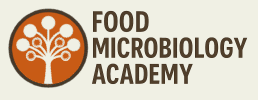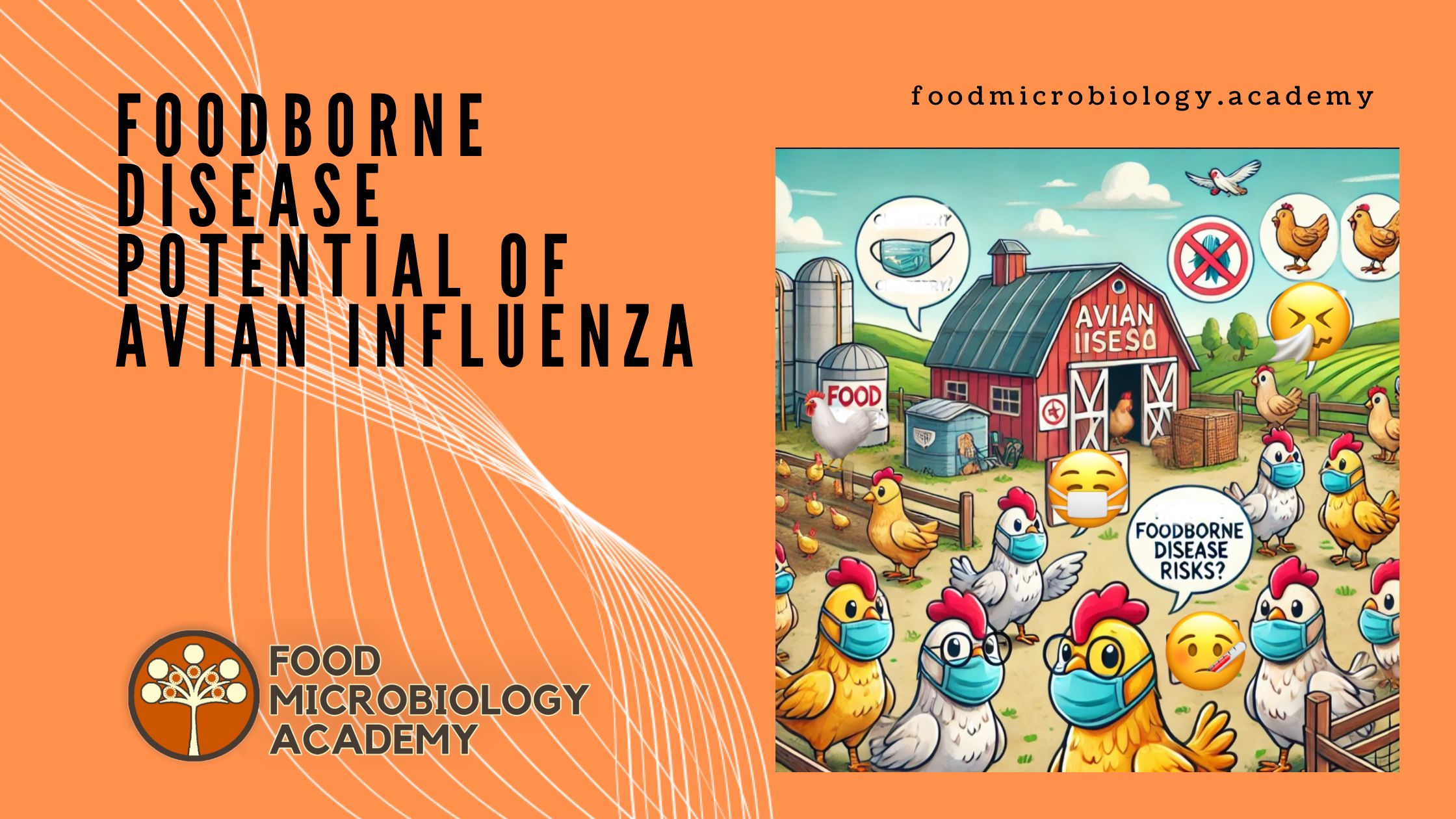Avian influenza is a highly contagious viral disease that primarily affects birds. While the virus is most notorious for its impact on poultry and wild bird populations, there has been growing concern about its potential as a foodborne illness in humans. This article, and the video below that Philip Button recorded with Kristy Costello from Tickle my Tastebuds Food and Nutrition Consultancy, will explore the current understanding of avian influenza’s foodborne disease potential, the risks associated with food consumption, and the preventive measures in place to protect public health.
The nature of avian influenza
Avian influenza is caused by influenza A viruses, which can infect a wide range of bird species, including chickens, turkeys, ducks, and wild birds[1]. These viruses are classified into subtypes based on two surface proteins: hemagglutinin (H) and neuraminidase (N). Some strains, particularly H5 and H7 subtypes, can be highly pathogenic and cause severe disease in birds[1].
While avian influenza viruses primarily affect birds, they can occasionally cross the species barrier and infect humans. This typically occurs through direct contact with infected birds or their environments[1]. However, the potential for these viruses to spread through food consumption has been a subject of concern and scientific investigation.
Foodborne transmission risk
The risk of contracting avian influenza through food consumption is generally considered low, but it is not entirely absent. Here are some key points to consider:
- Proper cooking: The avian influenza virus is sensitive to heat and can be inactivated by proper cooking. Thoroughly cooked poultry and eggs are safe to consume, even if they come from infected birds[1][3].
- Raw or undercooked products: The primary risk lies in the consumption of raw or undercooked poultry products. This includes dishes made with raw eggs or undercooked poultry meat[1].
- Cross-contamination: There is a potential risk of cross-contamination during food preparation if raw poultry products from infected birds come into contact with other foods or surfaces[3].
- Raw milk: In recent outbreaks involving dairy cattle, there has been concern about the potential transmission of avian influenza through raw (unpasteurised) milk. However, pasteurisation has been shown to be effective in inactivating the virus[4].
Specific food products and their risks
Poultry meat
The risk of contracting avian influenza from properly cooked poultry meat is negligible[5]. However, handling raw poultry from infected birds could potentially lead to infection if proper hygiene practices are not followed. It’s crucial to handle raw poultry with care, washing hands thoroughly after contact, and ensuring all surfaces and utensils are properly cleaned and disinfected[3].
Eggs
Eggs from infected birds could potentially carry the virus on their shells or in their contents. However, thoroughly cooking eggs eliminates this risk. It’s advisable to avoid consuming raw or soft-boiled eggs from areas experiencing avian influenza outbreaks[1].
Dairy products
Recent outbreaks of avian influenza in dairy cattle have raised questions about the safety of milk and dairy products. Studies have shown that pasteurization is effective at inactivating the H5N1 avian influenza virus in milk[4]. However, the consumption of raw milk or products made from raw milk could potentially pose a risk, especially in areas with active outbreaks[4].
Preventive measures and food safety practices
To minimise the risk of avian influenza transmission through food, several preventive measures and food safety practices are recommended. These are not specific to avian influenza though, and should be routinely carried out to safeguard yourself and others:
- Proper cooking: Cook poultry products thoroughly. The internal temperature should reach at least 74 °C to ensure the virus is inactivated[3].
- Hygiene practices: Maintain good hygiene when handling raw poultry products. Wash hands thoroughly with soap and water before and after handling raw poultry[3].
- Avoid cross-contamination: Use separate cutting boards and utensils for raw poultry and other foods. Clean and sanitise all surfaces and equipment that come into contact with raw poultry[3].
- Heat-treated products: Choose heat-treated milk and dairy products, especially during avian influenza outbreaks[4]. For example either pasteurised or UHT heat treated.
- Avoid high-risk foods: Always avoid consuming raw or undercooked eggs, poultry, or dairy products not heat-treated[1][4].
Regulatory measures and surveillance
Food safety authorities worldwide have implemented various measures to prevent the spread of avian influenza through the food chain:
- Surveillance programs: Many countries have established surveillance programs to monitor avian influenza in poultry flocks and wild bird populations[5].
- Culling and quarantine: In the event of an outbreak, infected flocks are typically culled, and strict quarantine measures are implemented to prevent the spread of the virus[5].
- Import restrictions: Countries may impose restrictions on the import of poultry products from regions experiencing avian influenza outbreaks[5].
- Food safety guidelines: Regulatory bodies provide guidelines for food handlers and consumers on safe handling and preparation of poultry products[3][4].
Research and future perspectives
Ongoing research is crucial to better understand the foodborne disease potential of avian influenza. Recent studies have focused on:
- Virus survival in food: Investigating how long avian influenza viruses can survive in various food products and under different storage conditions.
- Transmission routes: Exploring potential novel transmission routes, such as recent cases involving dairy cattle.
- Improved detection methods: Developing more sensitive and rapid detection methods for avian influenza viruses in food products.
- Vaccine development: Ongoing efforts to develop effective vaccines for poultry to prevent avian influenza outbreaks at the source.
Conclusion
While the risk of contracting avian influenza through food consumption is generally low, it’s essential to remain vigilant, especially during outbreaks. Proper food handling, cooking, and hygiene practices are crucial in minimizing any potential risk. The food industry, regulatory bodies, and consumers all play important roles in maintaining food safety and preventing the spread of avian influenza through the food chain.
As our understanding of avian influenza continues to evolve, it’s important to stay informed about the latest developments and recommendations from health authorities. By following established food safety guidelines and staying aware of any local outbreaks, consumers can enjoy poultry and dairy products with confidence, knowing they are taking appropriate precautions against avian influenza and other foodborne illnesses.
Information sources:
[1] https://www.who.int/news-room/fact-sheets/detail/influenza-(avian-and-other-zoonotic)
[2] https://www.cdc.gov/bird-flu/prevention/hpai-interim-recommendations.html
[3] https://www.woah.org/en/disease/avian-influenza/
[4] https://www.fda.gov/food/alerts-advisories-safety-information/updates-highly-pathogenic-avian-influenza-hpai
[5] https://www.dpi.nsw.gov.au/dpi/bfs/animal-biosecurity/avian-influenza
[6] https://pmc.ncbi.nlm.nih.gov/articles/PMC9150948/
[7] https://www.health.vic.gov.au/infectious-diseases/avian-influenza-bird-flu
[8] https://www.agriculture.gov.au/biosecurity-trade/pests-diseases-weeds/animal/avian-influenza
For a related discussion on whether COVID-19 is or could be a foodborne disease, I wrote some articles on this topic in 2020, links to these are below:
Food safety and COVID-19 – published 1 January 2021.
Is it gastro or COVID-19 – published 2 September 2020.
The global food supply chain transmission possibility of SARS-CoV-2 – published 17 August 2020.
COVID-19 is a likely foodborne disease – published 15 March 2020.



